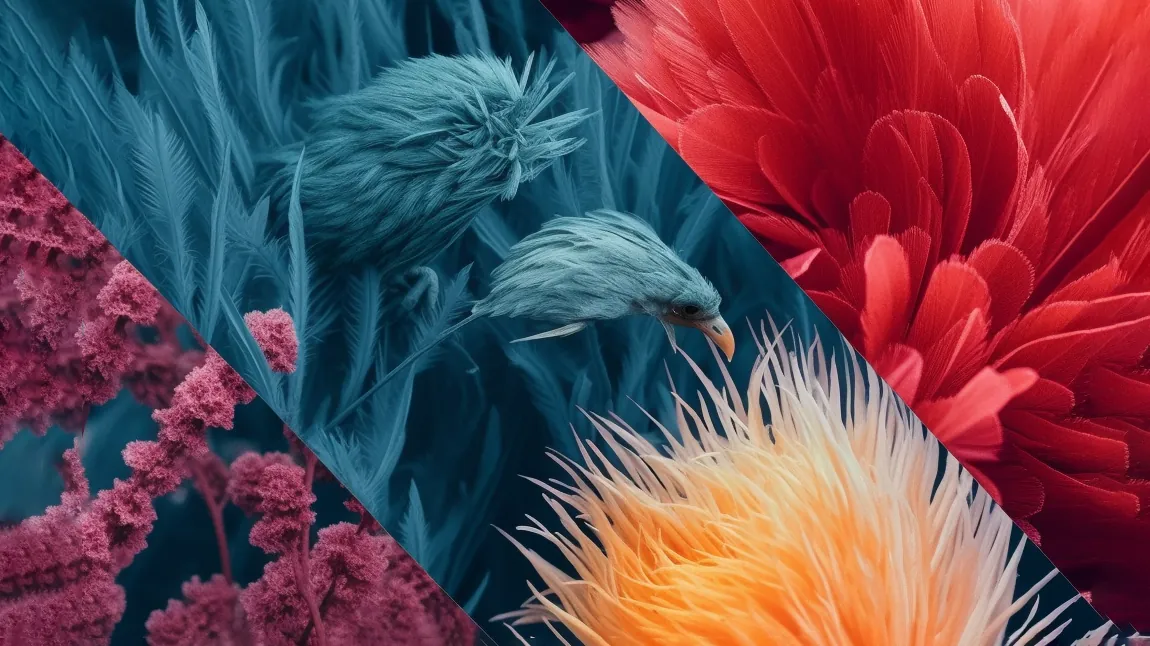Introduction
Creating is an incomparable pleasure. The spark of inspiration that turns into a work of art stimulates the dopamine receptors in our brain, giving us immense satisfaction. Many graphic designers say that the satisfaction generated by an idea coming to life is immeasurable. However, just as there is an opposite to every phenomenon, there is also a lack of inspiration. Sometimes ideas are scarce, or they are present, but choosing a color palette is difficult. These obstacles, although usually temporary, have the power to frustrate us. How do we deal with them? In this article, we'll explore how to overcome inspiration blocks related to color use and how nature can be an endless source of inspiration for finding the perfect colors for our designs.

The Theory of Colors
What is a colour? Our current understanding of colour comes from the work of Sir Isaac Newton. In the 17th century, he demonstrated through his experiments that the colours we perceive come from white light. This is because white light can be broken down into all the colours of the visible spectrum. Objects absorb some wavelengths of this light and reflect others. The wavelengths perceived by our eyes are the colours we see. To create successful artworks, we need to be able to compose varied colour palettes using the properties and characteristics of colours. The three main properties of colours are hue, intensity and value.
- Hue: This is what we generally refer to as 'color'. It's the distinction between red, blue, yellow, and so on. It's the basic identity of a color that distinguishes it from all others.
- Intensity (or Saturation): This property defines the brightness or dullness of a color. High-intensity colors are bright and vibrant, while low-intensity colors are subdued or grayish.
- Value: This refers to the lightness or darkness of a color. By altering the value of a color, we can create tints (lighter versions by adding white) or shades (darker versions by adding black).
Although it is not our aim here to detail colour theory, it is important to note that it is essential and can greatly assist in choosing the ideal colours for our designs. The different combinations possible can guide our choice of colour palette, using various shades and tints.
Modernity vs Nature
Natural landscapes have always been a major source of inspiration for human creations. Early man drew animals, landscapes, hunting and other stories on the walls of caves. Medieval painters have left us a legacy of beautiful paintings of natural landscapes, many of which continue to amaze us today and are on display in some of our greatest museums.
Yet in our time, the modernisation of society is increasingly taking us away from natural landscapes and towards urban landscapes. Silver skyscrapers, smartphones, social networks are all part of our daily lives. Some people don't even take the time to admire the starry night sky or to watch the setting sun in the afternoon, which adorns the sky with beautiful golden and crimson colours.
Despite this shift, modern designers have the opportunity to harness the power of nature even amidst the concrete jungles. The colors of a city park, a clear sky, or a sunset peeking between buildings can provide the same inspiration once drawn from untouched landscapes. Today's technology further bridges this gap. Applications that capture and identify colors from photos allow designers to create unique color palettes based on real-world images. Whether it's a forest scene from a weekend hike, a flower spotted during a commute, or a vibrant fruit at a local market, nature continues to offer its palette to those who seek it.

Natural Landscapes
There is a multitude of natural landscapes: coastal, mountainous, polar, desert, plains, underwater and others. Each of these unique environments - coastal with its blues and sandy beiges, mountainous with its deep greens and earthy browns, polar with its spectrum of whites, blues, pinks and purples, desert with its palette of yellows, oranges and reds, and plains with its golds and varying shades of green - abound with vegetation and animals of breathtaking and varied colours that are sure to inspire our creations.

All we have to do is immerse ourselves in the environment of our choice, open our eyes wide and observe each plant, each flower, each bird, each insect, in short, each living being that is part of the environment's ecosystem, as well as the changing hues of the sky and its clouds.
Color Inspiration in Nature
Take the case of underwater landscapes: they abound with colourful fish and corals that interact indescribably with the blue of the sea floor. Here, the turquoise of shallow waters, the deep blue or even black of the ocean depths, and the brilliant hues of marine life, including the semi-transparent, sometimes luminescent colours of jellyfish, can only amaze and inspire.

Application in Graphic Design
So let nature inspire us. Let's not shy away from natural landscapes, but rather use the different colour palettes that each environment offers us. Whether it's the blues and beiges of coastal scenes, the spectrum of colours in polar landscapes, the warm hues of deserts, the earth tones of plains, or the vibrant colours of underwater scenes, nature and its elements offer us a multitude of palettes to produce beautiful works.

Conclusion
In conclusion, nature is an inexhaustible source of inspiration for graphic design. By carefully observing our environment, we can unearth a multitude of colours and shades that will bring our creations to life. So, the next time you're looking for inspiration for your colour scheme, don't hesitate to turn to.


